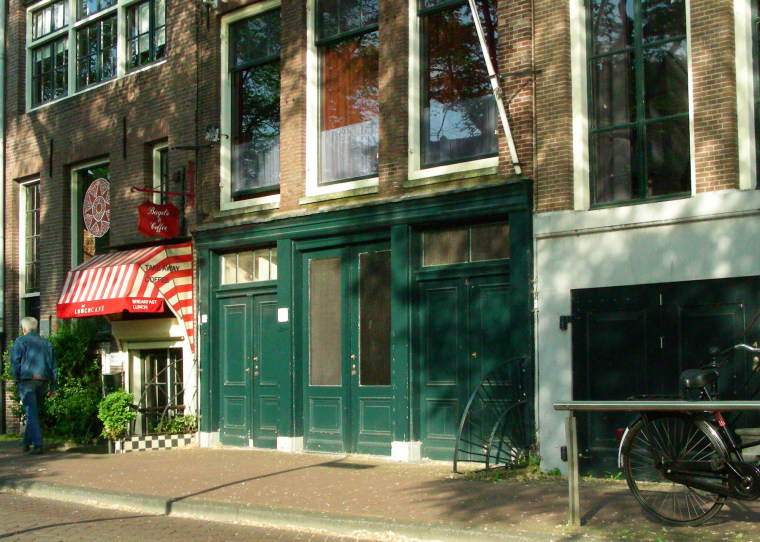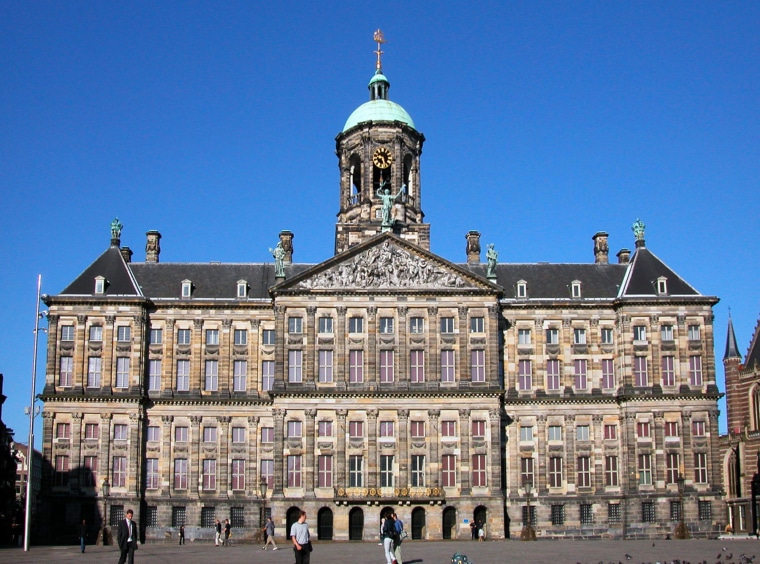When I'm updating my guidebooks, one of my favorite places to visit is rollicking Amsterdam. This Dutch metropolis is ever changing — and ever crowded with fun-loving sightseers.
Throughout the year, visitors line up to see its three top sights: the Van Gogh Museum, the Rijksmuseum (with Rembrandts, Vermeers and more), and the compelling Anne Frank House. The lines at the sights are generally for buying tickets rather than getting in. To avoid the wait, simply buy your tickets online on the museums' Web sites.
The Van Gogh Museum offers the world's finest collection of Vincent's paintings. But from now through June, it's filled with even more. The special “Van Gogh and the Colors of the Night” exhibit gathers together the artist's nighttime works from other museums, including the world-famous “Starry Night.”
If you want to complement your Dutch art appreciation with some Dutch alcohol appreciation, gin drinkers can learn the fine points, create their own blend and then have a bartender mix it on the spot at the new House of Bols: Cocktail & Genever Experience. This modern distillery, designed to give tourists an appreciation of Dutch gin, just opened across the street from the Van Gogh Museum. (And a few blocks away, beer lovers can soak up the recently re-opened Heineken Experience, located at the site of the former Heineken brewery.)
On sunny summer days, the Rijksmuseum offers a fun “lunch-box-with-a-blanket-in-the-park” deal (about $17 with museum entry or about $6 for just the boxed lunch and a loaner blanket). There are plenty of picnic spots on the pleasant museum grounds between the Rijks and Van Gogh museums.
Across town, on the park-like square called the Rembrandtplein, you can now experience Rembrandt's masterpiece, “The Night Watch,” in 3-D by checking out a new, kid-friendly statue based on the painting.

If inspired by your visit to the Anne Frank House, buy their new pamphlet, “Persecution and Resistance in Amsterdam” (75 cents), which leads you on a self-guided walk to the Dutch Resistance Museum and its impressive World War II exhibits.
Fans of handbags, and perhaps even their reluctant spouses, will enjoy the hardworking Tassenmuseum Hendrikje (Museum of Bags and Purses), which fills an elegant 1664 canal house with artifacts from 500 fascinating and creative years of bag and purse history.
The Royal Palace on Amsterdam's Dam Square re-opens to the public in June after three years of extensive renovations. When constructed in 1648, this sumptuous building was one of Europe's finest. Today, it's the official (though not actual) residence of Queen Beatrix (she lives in The Hague).
In Amsterdam's infamous Red Light District, a number of the windows that once displayed prostitutes now showcase the latest fashions — lit by lights that aren't red. The city government is trying to rein in the sex trade and give the area — so popular among certain “window-shopping” visitors — a little elegance. It's taken over the window leases from landlords and rented them to local fashion designers instead.
Amsterdam's Central Train Station is being renovated and will remain a messy construction project that's expected to inconvenience travelers through 2012. You can save lots of time by getting train tickets and information in a small-town station (such as Haarlem) or at Schiphol Airport's station (where there's wonderful service).
Amsterdam's towering yet relaxed Central Library, a short walk from its train station, offers hundreds of fast Internet terminals and welcomes tourists as well as locals to get online for free. While you're there, enjoy the dramatic views from its terrace and a reasonable meal from its slick top-floor cafeteria.
Or, perhaps you'd like to check your e-mail in a fog of marijuana smoke at one of the city's many “coffeeshops.” The Dutch use this English word to describe places that sell cannabis. While indoor tobacco smoke was banned in 2008, pot smoke is no problem in these shops. In a twist that would seem strange to Americans, Dutch coffeeshops can actually lose their license if they allow tobacco smoking inside their premises.
South of Amsterdam, idyllic Delft — dreamy as a painting by hometown artist Johannes Vermeer — now offers a fine Vermeer Center. While it doesn't have any of the Dutch master's 30-some originals (though Amsterdam's Rijksmuseum has several), the center does a good job tracing the creative mind of Delft's favorite resident, and its shop is the ideal place to buy some “sou-vermeers.” For about $13, the tourist office offers a two-hour walking tour of the town that includes a canal boat trip — just right to savor the place that inspired so much fine art.
Offering new sights and old masterpieces, the Dutch do a dandy job of making this little country a delight for travelers.
( writes European travel guidebooks and hosts travel shows on public television and public radio. E-mail him at , or write to him c/o P.O. Box 2009, Edmonds, Wash. 98020.)
